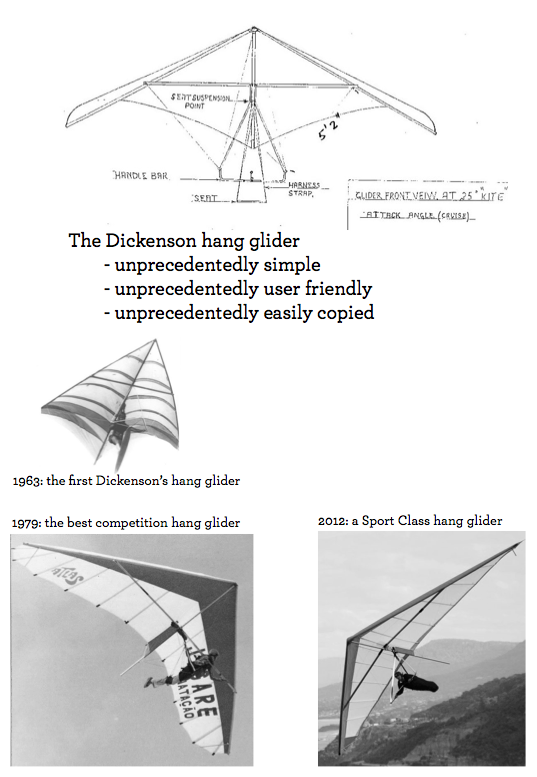The FAI Gold Air Medal for John Dickenson!
John Dickenson, inventor of the modern hang glider, has been honored with the highest FAI award: the Air Gold Medal. The glider that John Dickenson built in september 1963 proved to be unprecedently simple, unprecedently user friendly, unprecedently easily copied. It became the template for almost all hang-gliders, giving access to the sky to thousands of people, opening the doors to a new sport.
A (very) short story of hang gliding
Hang gliding began with Otto Lilienthal in 1891. The German engineer completed over 2000 flights. His gliders were very complex and difficult to build or repair, with a control system that proved inadequate to deal with turbulence. Lilienthal died following a crash; still he proved that flying was possible.
American railway engineer Octave Chanute designed, built and flew his Bi-plane hang glider that same year. Plans for the Chanute glider sold well and many were built and flown in the early 20th century. The gliders were relatively simple to build, but they lacked adequate control for turbulent conditions and they were fragile if crashed.
The sport of hang gliding really began in Australia in 1963 when John Dickenson invented the modern hang glider. The glider was robust, able to withstand many crashes and still fly, easy to transport and store.
The design could be comprehended after a moment's viewing or looking at a picture, and replicated for $30 with no special tools, materials or knowledge, and often flown the same day.
Dickenson's pendulum weight-shift control system was intuitive and provided abundant control. The glider was so easy to fly that one could become pilots and achieve Icarus’ dream simply by running off a hill and learning on the way down.
The magic of Dickenson’s device is the perfect coincidence of extreme simplicity, user friendliness and copy-ability. No other aircraft in history is as easy to build, fly and duplicate as the Dickenson wing. Almost 50 years after it was created, it is still the template for beginners’ hang gliders.
Dickenson's early wings used materials like banana bag plastic, Oregon pine spars and clothesline wire twist-tied at each end, but they all proved safe and strong enough. Dickenson's last wing, built in 1965, was a far cry from his earlier efforts. With more funds available to him, the airframe was 1.5 inch aircraft aluminium, the sail was made from sailcloth cut and sewn by a sail-maker, the wires were properly swaged and fitted.
In 1969, Australian Bill Moyes foot-launched and ridge-soared a Dickenson hang glider, an event John Dickenson regarded as the beginning of modern hang gliding, the proof that his wing could soar.
The same year, Bill Moyes and Bill Bennett, another Australian, took the Dickenson hang glider around the world. Moyes’ and Bennett’s flights and stunts helped to raise awareness of the glider.
Since Lilienthal's triumphs and tragedies, there had always been hang gliding here and there. Individuals or small groups of aspiring pilots were working with Chanute type wings, and some with bi-conical wings inspired by photos being published by NASA. But wherever Moyes or Bennett flew, they proved the obviously superior nature of the Dickenson glider. And wherever they encountered individuals or these groups, their spirit of generosity meant they were happy to share their knowledge.
Around the world, the number of Dickenson hang gliders went from a few dozen in 1969, to tens of thousands in just six years, when hang gliding became part of FAI in the Commission Internationale de Vol Libre (CIVL).


